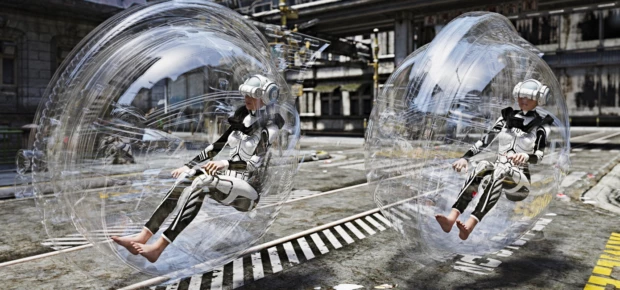
Member Article
Virtual reality’s potential impact on transportation
Since entertainment and gaming are typically the focal points for virtual and mixed reality, it’s easy to only think in those contexts. While advancements in those two areas are likely to continue for the foreseeable future, the same VR technologies will significantly impact other areas of society as well. We’ve discussed [training] and [urban planning], but a major potential application is something that hasn’t gotten a lot of attention yet: transportation.
For consumers, the process of researching and buying a vehicle is likely to be one of the first ways they interact with VR outside of entertainment: “Virtual reality technology is being used by major automotive brands to showcase their products. Customers can try everything, from examining vehicle features to test driving,” says IEEE member Sukanya Mandal.
VR’s involvement with cars and trucks doesn’t start at the point of sale — this technology will have an impact throughout the design process, too. Mandal again: “For automotive designers and engineers, VR’s realistic elements allow them to analyse how a new vehicle will look or test its efficiency without having to build multiple models, reducing time and cost.” This change in process would benefit consumers as well as the environment.
As designs are ready to move to production, there’s an entire emerging field called Industrial Augmented Reality (IAR) that’s improving how factories and warehouses operate. Research published on IEEE Xplore covers the entire IAR lifecycle in a shipyard, and the tremendous benefits to the shipbuilding process. IAR can help provide workers with instructions, train new hires, visualise the location of products and tools, alert employees of predictive maintenance, augment employee communication, visualise equipment in dark and hidden areas and more.
When it comes to aircraft, virtual and mixed reality stand to make complex systems easier to operate, in turn improving safety, a highly desirable outcome. “To envision how transformational this can be, imagine a pilot being able to manipulate sensitive engine controls within an aircraft by merely a hand gesture,” says IEEE member Saumya Sharma.
A similar concept is making waves in the world of drone piloting, but using the body instead of the hand. Researchers have found that torso control is generally easier to learn and more intuitive than a joystick when it comes to flying a drone. The learnings from this work, aside from impacting other vehicles, stand to come full circle and improve control in VR gaming.
This was posted in Bdaily's Members' News section by IEEE .




 test article 123456789
test article 123456789
 hmcmh89cg45mh98-cg45hm89-
hmcmh89cg45mh98-cg45hm89-
 test456456456456456456
test456456456456456456
 test123123123123123123
test123123123123123123
 test xxxdiosphfjpodskhfiuodsh
test xxxdiosphfjpodskhfiuodsh
 Savour the flavour: North Tyneside Restaurant Week returns for 2024
Savour the flavour: North Tyneside Restaurant Week returns for 2024
 Six steps to finding the right buyer for your business
Six steps to finding the right buyer for your business
 Stephen signs off on a special night
Stephen signs off on a special night
 Life’s a Peachaus: Gillian Ridley Whittle
Life’s a Peachaus: Gillian Ridley Whittle
 Making a splash: Phil Groom
Making a splash: Phil Groom
 Making workplace wellbeing a priority
Making workplace wellbeing a priority
 A record of delivery, a promise of more: Ben Houchen
A record of delivery, a promise of more: Ben Houchen